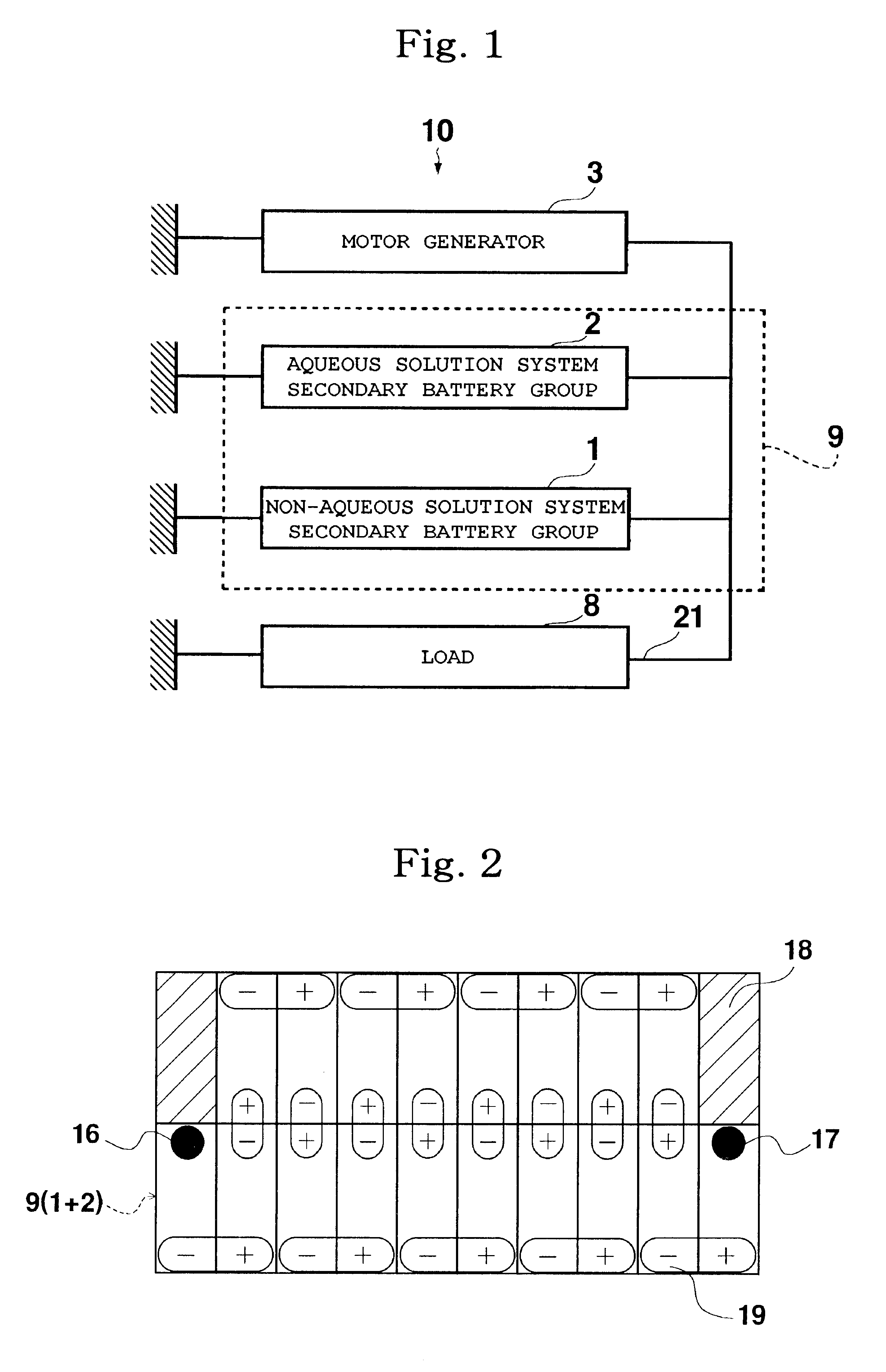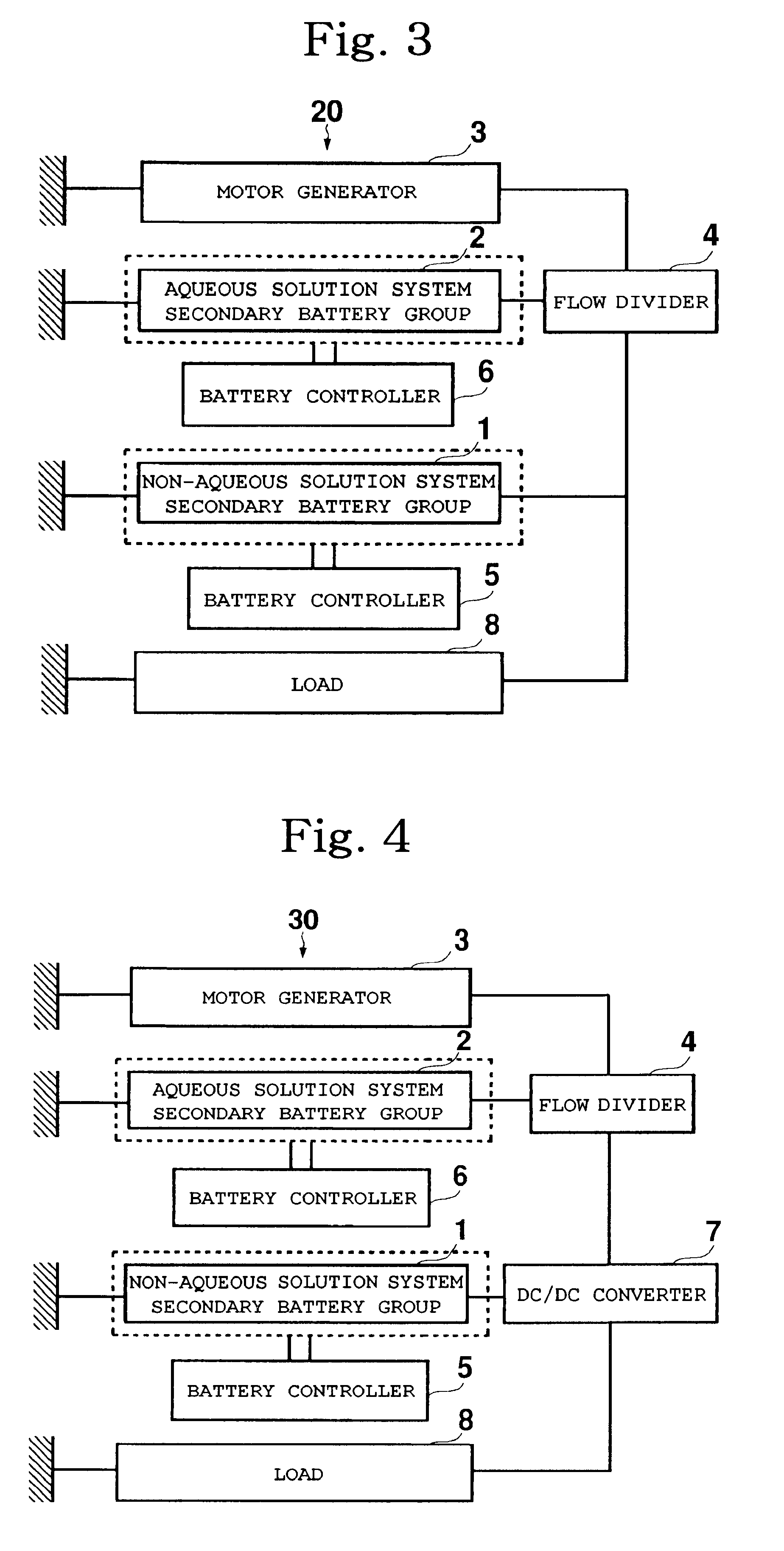Power supply system and state of charge estimating method
a power supply system and state-of-charge technology, applied in the direction of electric/fluid circuit, final product manufacturing, transportation and packaging, etc., can solve the problems of affecting the life of the battery, reducing the charging efficiency, and consuming heat at a time of deceleration of the automobil
- Summary
- Abstract
- Description
- Claims
- Application Information
AI Technical Summary
Problems solved by technology
Method used
Image
Examples
Embodiment Construction
Next, the text results of charging tests of power systems of examples manufactured according to the above-mentioned embodiments will be explained. Incidentally, the test results of charging tests of power systems of comparative examples manufactured for comparison will also be explained.
In the power system 10, charging tests were performed regarding Example 1 where 10 lithium ion secondary batteries (3.6V-3.5 Ah) connected in series were used as the non-aqueous solution system secondary battery group 1 and Example 2 where 11 lithium ion secondary batteries (3.6V-3.5 Ah) connected in series were used as the non-aqueous solution system secondary battery group 1. A charging test was also performed regarding Comparative example 1 where only a 36V system control valve type lead-acid battery (36V-18 Ah) comprising 18 cells was used as a conventional power system.
FIG. 10 shows a relationship between fifth second battery voltages and charging rates of Example 1, Example 2 and Comparative ex...
PUM
 Login to View More
Login to View More Abstract
Description
Claims
Application Information
 Login to View More
Login to View More - R&D
- Intellectual Property
- Life Sciences
- Materials
- Tech Scout
- Unparalleled Data Quality
- Higher Quality Content
- 60% Fewer Hallucinations
Browse by: Latest US Patents, China's latest patents, Technical Efficacy Thesaurus, Application Domain, Technology Topic, Popular Technical Reports.
© 2025 PatSnap. All rights reserved.Legal|Privacy policy|Modern Slavery Act Transparency Statement|Sitemap|About US| Contact US: help@patsnap.com



